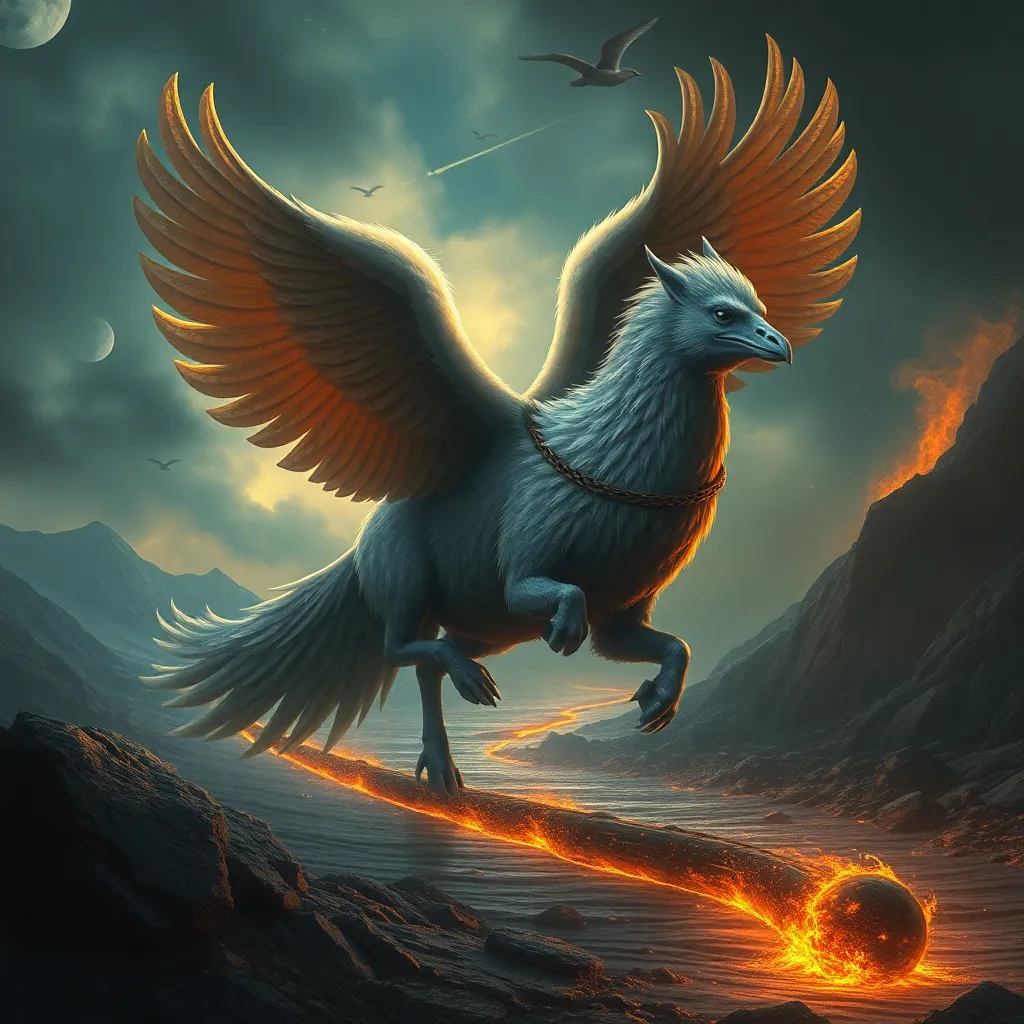The Hippogriff’s Journey to Valhalla: A Norse Mythological Interpretation
I. Introduction
The Hippogriff, a creature born from the imagination of classical literature, represents a fascinating blend of the noble horse and the fierce eagle. Its existence in mythology serves as a testament to the importance of hybrid beings, symbolizing the potential for greatness through the merging of different qualities. In contrast, Valhalla stands as a prominent symbol in Norse mythology, representing a grand hall where warriors who have died valorously are received after battle. This article aims to explore the relationship between the Hippogriff and the themes prevalent in Norse mythology, particularly its journey toward Valhalla.
II. The Origins of the Hippogriff
The Hippogriff first emerged in literature through the works of Renaissance poet Ludovico Ariosto in his epic poem “Orlando Furioso.” This creature, with the body of a horse and the wings and head of an eagle, symbolizes the ideal of noble qualities combined with strength and freedom.
As a hybrid creature, the Hippogriff embodies various themes:
- Symbolism of duality: It represents the coexistence of different natures, suggesting that true strength lies in diversity.
- Connections to other mythological beings: The Hippogriff can be linked to various creatures in mythology, such as the griffin and the Pegasus, which also symbolize power and grace.
III. Understanding Valhalla
Valhalla, or “Valhöll,” translates to “hall of the slain” in Old Norse. It is an integral part of Norse cosmology, serving as the final resting place for honorable warriors who have died in battle. In Norse beliefs, Valhalla is not merely a place of rest; it is a realm of eternal glory and feasting.
The significance of Valhalla in Norse culture can be summarized through the following points:
- Afterlife for warriors: Those who die bravely in combat are chosen by the Valkyries to dwell in Valhalla, where they prepare for Ragnarök, the end of the world.
- Honor and glory: Valhalla symbolizes the ultimate recognition of a warrior’s valor, a place where their legacy is celebrated.
IV. The Journey of the Hippogriff
The mythical journey of the Hippogriff from Earth to Valhalla is a narrative filled with trials and tribulations, echoing the classic hero’s journey found throughout mythologies. This journey can be characterized by:
- Trials: The Hippogriff faces formidable challenges, such as battling fierce opponents and overcoming treacherous landscapes.
- Fate and destiny: In Norse mythology, the concept of fate is paramount. The Hippogriff’s journey reflects the belief that every creature has a predetermined path, shaped by the Norns, the goddesses of fate.
V. Themes of Transformation and Redemption
The Hippogriff’s journey embodies themes of transformation and redemption, which resonate deeply within Norse mythology. Throughout its quest, the Hippogriff undergoes a symbolic transformation:
- From creature to hero: The Hippogriff evolves from a mere mythological being into a symbol of honor, bravery, and sacrifice.
- Parallels with Norse heroes: Much like the heroes of Norse sagas, the Hippogriff’s journey emphasizes the importance of courage and the quest for redemption.
VI. The Role of Deities and Spirits
As the Hippogriff embarks on its journey, it encounters various Norse deities and spirits who play crucial roles:
- Odin: The Allfather of the gods, who oversees the fate of warriors and may grant the Hippogriff guidance.
- Valkyries: These warrior maidens serve Odin and select those who may enter Valhalla, influencing the Hippogriff’s path.
- Spiritual guides: Other spirits may offer wisdom and support, reflecting the interconnectedness of all beings in Norse cosmology.
VII. Lessons from the Hippogriff’s Journey
The journey of the Hippogriff imparts valuable moral and philosophical lessons:
- Courage and resilience: The Hippogriff’s trials teach the importance of facing challenges head-on, embodying the spirit of perseverance.
- Reflection of human experiences: The journey mirrors human struggles, emphasizing that every individual must confront their fears and seek redemption.
VIII. Conclusion
In summary, the Hippogriff’s journey to Valhalla serves as a rich tapestry woven with Norse mythological themes. It encapsulates ideas of honor, transformation, and the quest for redemption, resonating with the values of bravery and sacrifice celebrated in Norse culture. The ongoing relevance of these themes invites readers to explore mythological interpretations and the lessons they offer in understanding the human experience.



